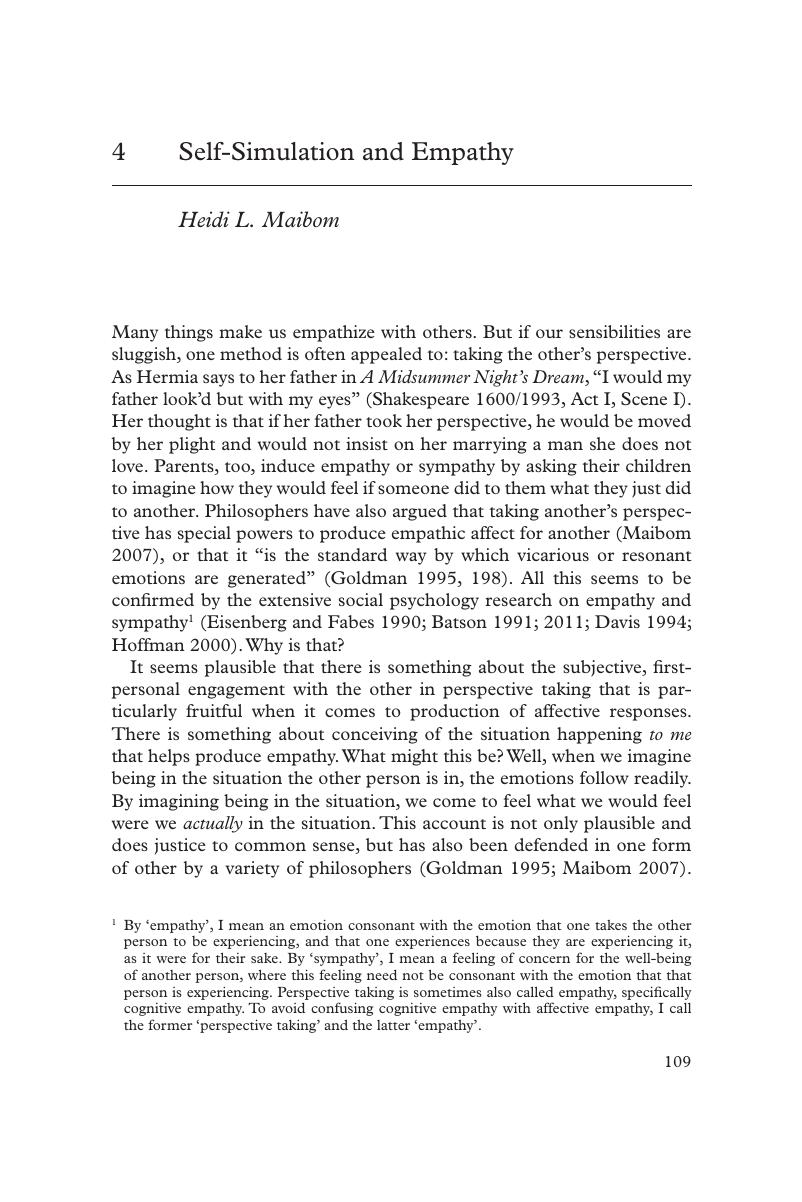Book contents
- Forms of Fellow Feeling
- Forms of Fellow Feeling
- Copyright page
- Contents
- Notes on Contributors
- I Introduction
- II Empathy, Sympathy and Concern
- III Understanding Empathy
- 4 Self-Simulation and Empathy
- 5 Empathy as an Instinct
- 6 A Moral Account of Empathy and Fellow Feeling
- IV Fellow Feeling and the Development of Prosociality
- V Empathy and Morality
- Author Index
- Subject Index
- References
4 - Self-Simulation and Empathy
from III - Understanding Empathy
Published online by Cambridge University Press: 28 December 2017
- Forms of Fellow Feeling
- Forms of Fellow Feeling
- Copyright page
- Contents
- Notes on Contributors
- I Introduction
- II Empathy, Sympathy and Concern
- III Understanding Empathy
- 4 Self-Simulation and Empathy
- 5 Empathy as an Instinct
- 6 A Moral Account of Empathy and Fellow Feeling
- IV Fellow Feeling and the Development of Prosociality
- V Empathy and Morality
- Author Index
- Subject Index
- References
Summary

- Type
- Chapter
- Information
- Forms of Fellow FeelingEmpathy, Sympathy, Concern and Moral Agency, pp. 109 - 132Publisher: Cambridge University PressPrint publication year: 2018
References
- 5
- Cited by

